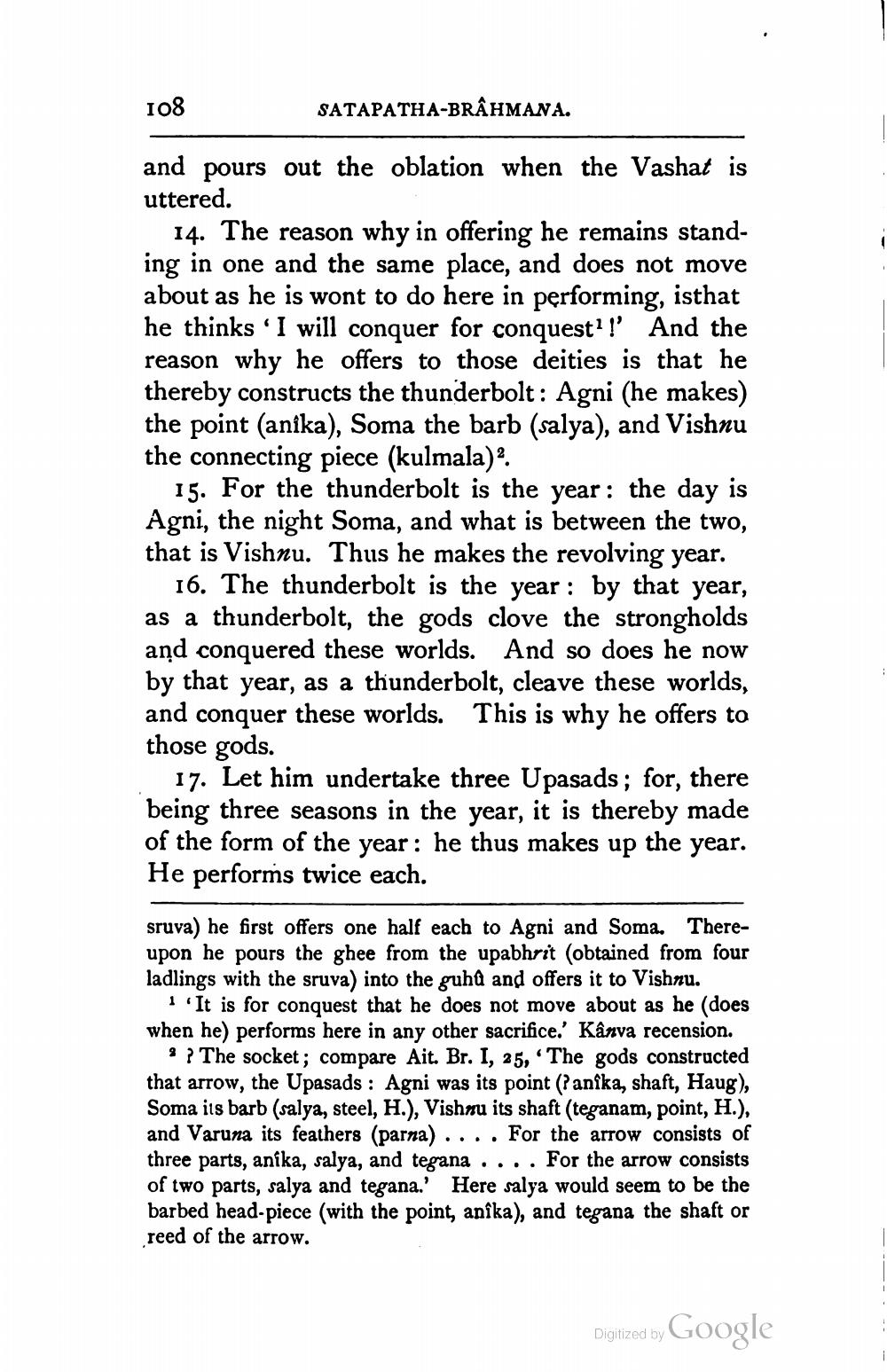________________
108
SATAPATHA-BRAHMANA.
and pours out the oblation when the Vashat is uttered.
14. The reason why in offering he remains standing in one and the same place, and does not move about as he is wont to do here in performing, isthat he thinks I will conquer for conquest1!' And the reason why he offers to those deities is that he thereby constructs the thunderbolt: Agni (he makes) the point (anika), Soma the barb (salya), and Vishnu the connecting piece (kulmala)".
15. For the thunderbolt is the year: the day is Agni, the night Soma, and what is between the two, that is Vishnu. Thus he makes the revolving year.
16. The thunderbolt is the year: by that year, as a thunderbolt, the gods clove the strongholds and conquered these worlds. And so does he now by that year, as a thunderbolt, cleave these worlds, and conquer these worlds. This is why he offers to those gods.
17. Let him undertake three Upasads; for, there being three seasons in the year, it is thereby made of the form of the year: he thus makes up the year. He performs twice each.
sruva) he first offers one half each to Agni and Soma. Thereupon he pours the ghee from the upabhrit (obtained from four ladlings with the sruva) into the guhû and offers it to Vishnu.
1 'It is for conquest that he does not move about as he (does when he) performs here in any other sacrifice.' Kâzva recension.
?? The socket; compare Ait. Br. I, 25, 'The gods constructed that arrow, the Upasads: Agni was its point (? anîka, shaft, Haug), Soma its barb (salya, steel, H.), Vishnu its shaft (teganam, point, H.), and Varuna its feathers (parna). For the arrow consists of three parts, anîka, salya, and tegana .... For the arrow consists of two parts, salya and tegana.' Here salya would seem to be the barbed head-piece (with the point, anîka), and tegana the shaft or reed of the arrow.
Digitized by
Google




